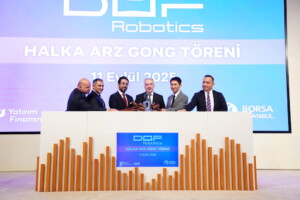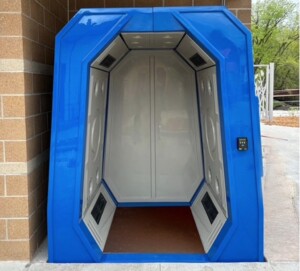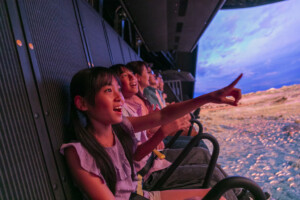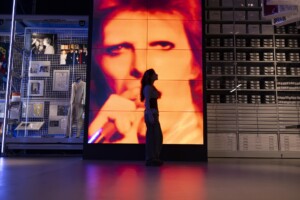Mad Systems Inc., the award-winning audiovisual and interactive system designer and integrator, has worked with Cinnabar on a new project at the Discovery Cube in Orange, which aims to educate visitors on the issue of mosquitos through an interactive exhibit.
The Aedes mosquito began to invade Southern California in 2011. Unlike the native Culex mosquito, this species is aggressive and is more likely to spread disease. They can use any source of water, even a bottle top with some stale water, to breed and continue the cycle. The new “Mosquitos” exhibit at the Discovery Cube explores the issue and explains what actions people can take to protect themselves.
Interactive exhibit educates visitors
Visitors find out more about the problem through dynamic graphics, which show examples of some areas where these mosquitos can breed. Mad Systems incorporated a deep infra-red camera to show visitors what mosquitoes ’see’, and how exposed warm skin acts as an attractant to these insects.
As visitors are seen by the camera, the interactive computer soon causes mosquitos to appear around the warmer spots in the image – which represent exposed skin.
The exhibit also educates visitors on precautions, showing them that they should use an EPA approved repellent on a regular basis when there are mosquitoes in the area to avoid being bitten, and possibly infected with the diseases that these insects spread. A repellent spray is shown on the screen, and when visitors reach for it, it will spray exposed skin at which point the mosquitoes that were attracted to them gradually disappear.
An effective tool
“This is a simple, but effective tool to educate the public about the threat of this invasive species,” says Maris Ensing of Mad Systems. “The Mosquitoes exhibit explains the problem and provides guidance as to what to do to provide protection against mosquito bites.
“One of the interesting issues with an exhibit such as this is the lens of the IR camera, which is made of Germanium, one of the few materials that will let deep infra-red signal through and focus them. We were concerned about protecting the surface of the expensive wide-angle lens from the public.
“Of course, any material used as a protective device needs to let deep IR wavelengths through, so that the best material to allow for protection of the lens is actually a piece of very flat germanium that is coated with an anti-fingerprint layer.”
Mad Systems was responsible for installing the electronics for the exhibit. It also incorporated a remote access capability, meaning the team can provide remote support.
The company recently celebrated the opening of Crayola IDEAworks: The Creativity Exhibition at its world premiere location, the Franklin Institute in Philadelphia. This is the first travelling exhibit to use Mad Systems’ QuickSilver solution, making exhibition operations easier.















